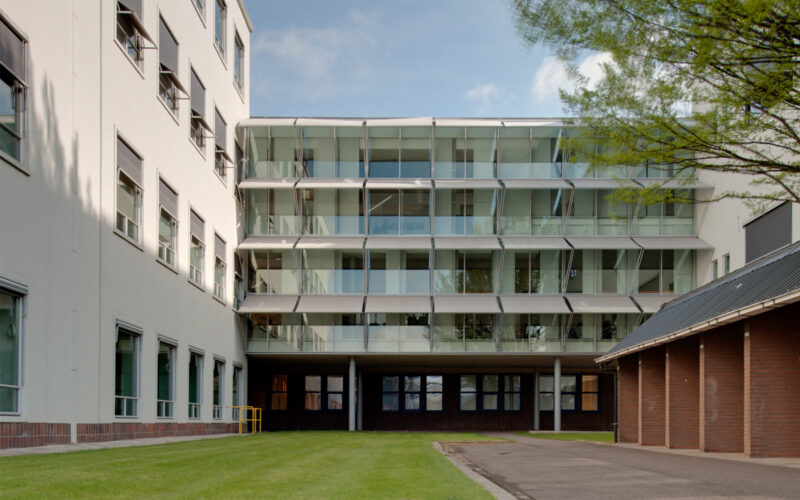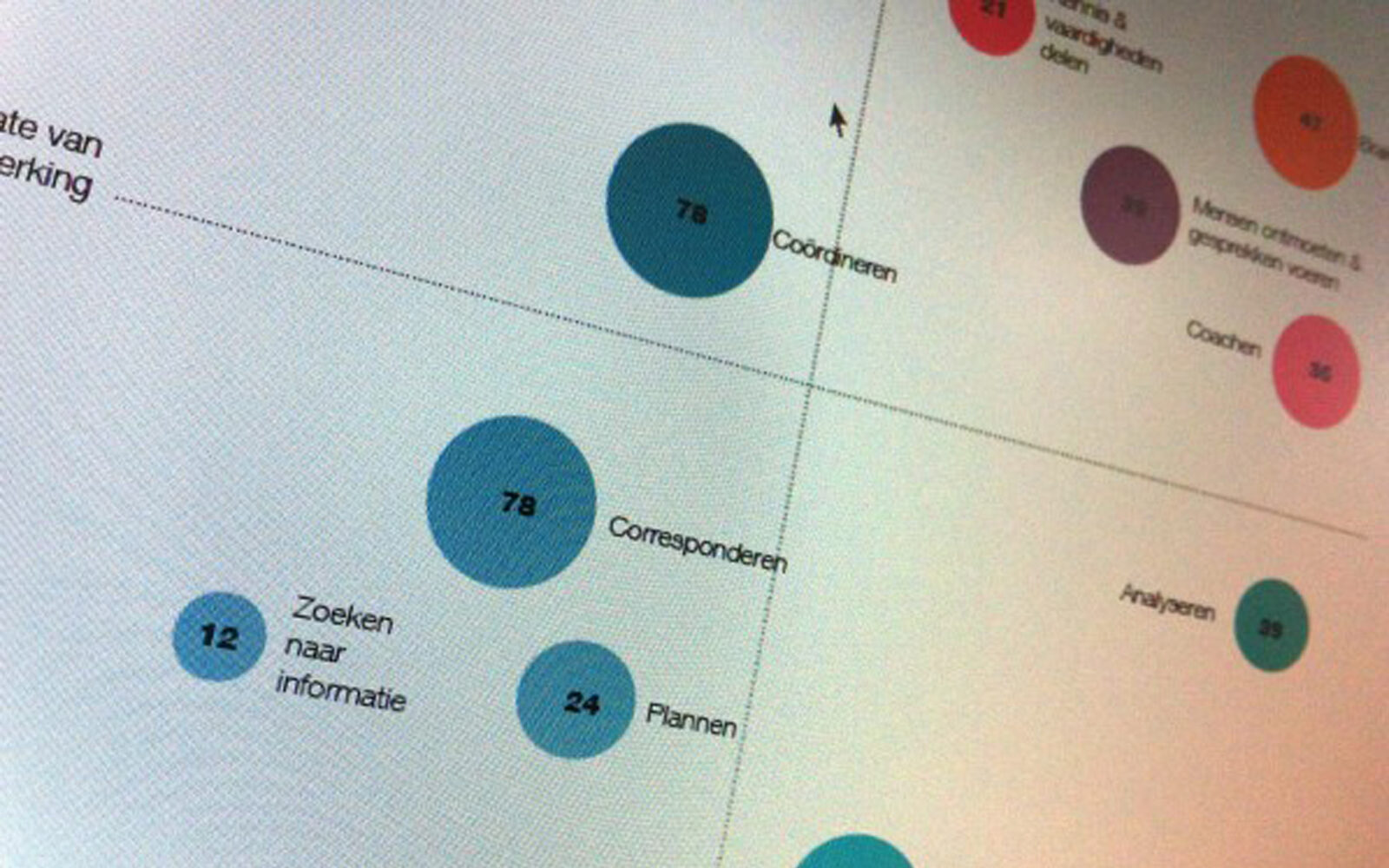
Workplace analytics (WPA)
Tailored design through unique analysis method
To design well, one does not need to know what the user thinks of his workspace, but how the user performs his task. Figuring this out takes time and is costly, which is why normally a sounding board is taken into account. However, thanks to Workplace Analytics (WPA), it is now possible to map all needs of employees quickly and efficiently: an excellent base for a succesful building design. For Broekbakema reason enough to partner up with Innvire, who developed WPA.
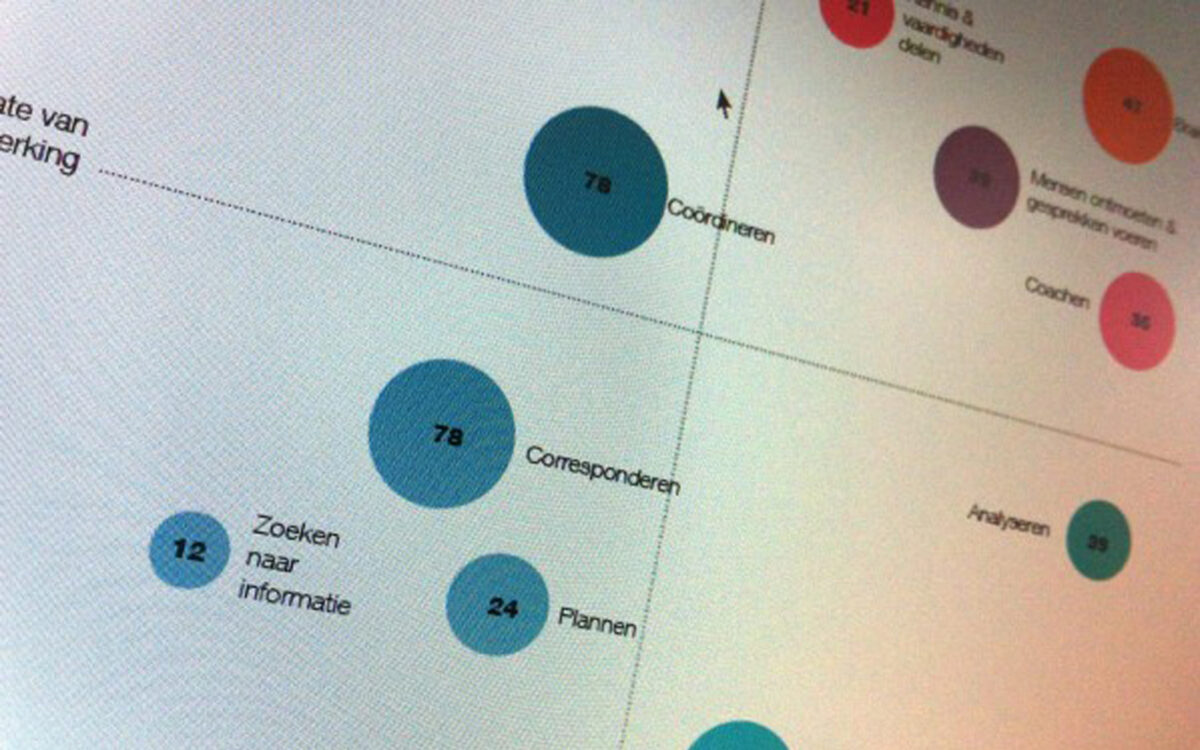
“Bringing people together and connecting them in an inspiring environemnt”, says Erik van Eck, architect-director at Broekbakema. “That is why I became an architect. I see myself as the movie director who translates wishes and ambitions into a fitting building. We talk with our clients and question them to gain insight in both the need as well as the demand for an office building. If we want to do this properly however, we would have to put a lot of time, energy and money into it. As exactly that is often absent, we speak only to higher management and a delegation from the whole personnel.”
Digital Clipboard
“It should be possible to do this differently” we thought at Broekbakema, as the result of a consultation in such small closed circles often does not align with the demands of people in the field. Thankfully, Innvire shared the same thought as we had, which is why the company developed Workplace Analytics. According to Erik van Eck: “An efficient and fast way to get the needs and wishes of all employees. Using WPA we can then quickly transition to a building design that is tailored perfectly to the wishes and ambitions of people working at that company.”
The thought behind WPA is simple, according to director of Innvire Ilya Devers: “Helping clients gain insight in what they want. The time of wandering around with a clipboard interviewing everyone is past, but by using digital means it was possible to bring back that clipboard. By such we can work radically different; no sounding boards, but a scan -a digital enquiry- with all employees. By preparing the scan well, we are able to get an average response of 72 percent, with peaks towards 90. This is extremely high, but additionally we get these results in a structured manner and are able to analyse them digitally. This way we do not get overwhelmed by the amount of information we usually see in interviews.
Not a sounding board, but a scan – a digital enquiry – amongst all employees.
Asking the right question
How does it work? You do not ask the question to what a workspace should conform, as this means you get what you already had: the existing workspace, because it is a reference for that employee. “The knowledge worker does not get excited about his workplace, but about the work he does”, says Devers. “So don’t ask for the place, but the work itself. We talk about what employees actually do and have to do in order to succeed in their job. The ingenuity is that WPA is able to generate statistics based on the answers with which it is possible to identify activities per function and aspects such as management style and internal cooperation. We are able to quickly and clearly visualize how an organisation functions. With that data you can analyze how a place should look to facilitate the workflow. That is the base of the design.”
If you ask to what a workspace should conform, you get what you already had.
Involving architects before you design
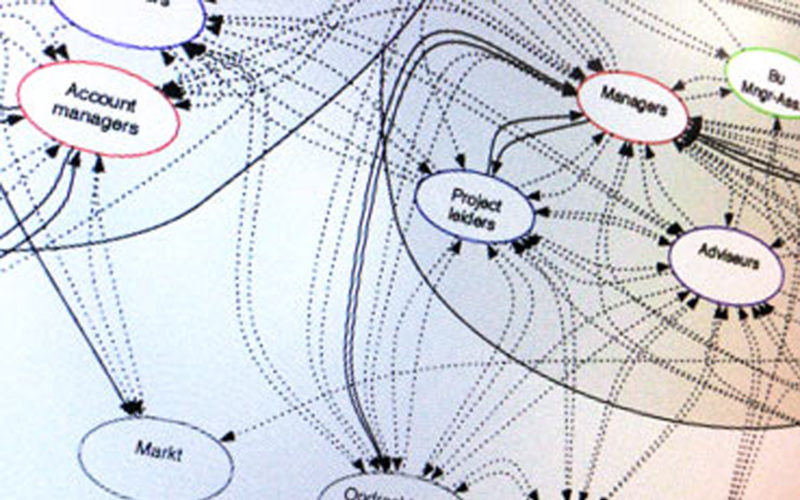
It is unique in the world of architecture that Broekbakema embraces WPA. Van Eck: “The question that WPA answers is just before the design process, in a stage of developing the program. Normally the architect is not involved in that, but this is a pity. Giving advice before sketching yields a better design in the end I think; a design that really suits the way your organisation functions. A design that yields a certain timelessness because it is not based on the opinion of some people within a company, but on the full base of employees.”
It is important to note that WPA does not give you an office design. Like Devers puts it: “This is an element that increases your insight and not a solution generator.” According to Van Eck: “WPA allows you to see how your work looks like. What you do at the office, how often you are on the road and how much time you spend with your colleagues. With the answers on such questions we are able to design an environment that perfectly suits the work processes. WPA allows for tailor-made design, like at the new headquarters for Océ in Venlo. Firstly we showed the Board of Directors the results that can be achieved with WPA. They were immediately enthousiastic and wanted to know how it influenced the new design. We asked employees in our scans and were really able to design the building around the way different departments at Océ work. This led to surprising collaboration schemes, which led to the grouping of various departments that never before had been together. Aftwerards we also visited a building of DSM, in which we used WPA results to design a similar layout. The employees were very positive: they understood how flexible work does not equate an immense office garden without privacy, that you can still personalize offices and that the various spaces really answer the demands employees have in a regular working day.”
Pulling together
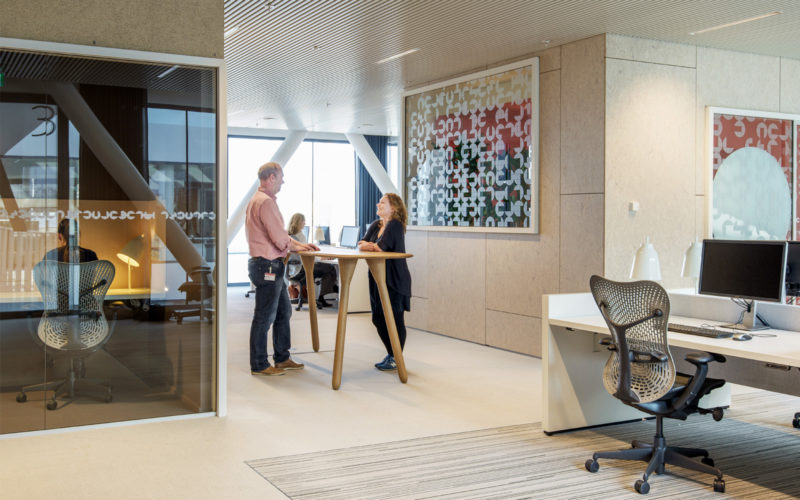
Broekbakema and Innvire pull together in the application of WPA. “We know WPA, but not in the way the developers do”, says Van Eck. “We do not bring clear demarcations. This age demands different specialisms to work together in order to serve our clients well. The collaboration between us and Innvire is in my opinion a good example to what that can lead.”
Devers too is very happy about the collaboration: “Architects are the building partners and come up with solutions for the wishes of the users. Because we link the users’ information from the WPA to the information of a building, preferably with BIM, we are able to generate a good working environment for the client. Specifically in Broekbakema we find a partner that is dedicated to use this instrument for an optimal end result.”
Both gentlemen would like to emphasize that the information gained from the WPA is not used for broader analyses on the development of office spaces in general. Devers: “It is of no use to put together insights from one organization with that of another. It is about what that organization needs that makes each solution unique. Comparing apples to pears already happens enough in the market. We facilitate companies optimally in their search for a new reality in their work environment. If you start comparing, you will get regression to a generalized norm. Then the innovative aspect of WPA disappears.” Van Eck adds to this: “The power is that you can give insight into work processes so that we can realize the architectural solutions that are tailored to specific needs. And that based on the full pool of employees – especially that last part is unique to WPA.”
Written by: Sander Grip
Images of WPA: Innvire. Foto interior: Ronald Zijlstra
- Author
- Sander Grip
- Images WPA
- Innvire
- Foto interior
- Ronald Zijlstra
- Partners
- Innvire
We are happy to tell you more.
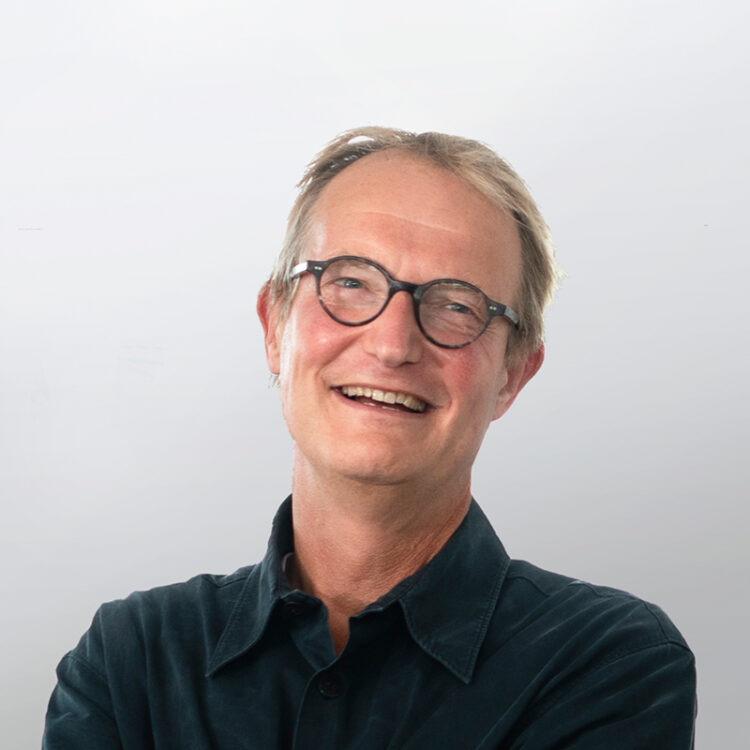
- Erik van Eck
- Architect director
